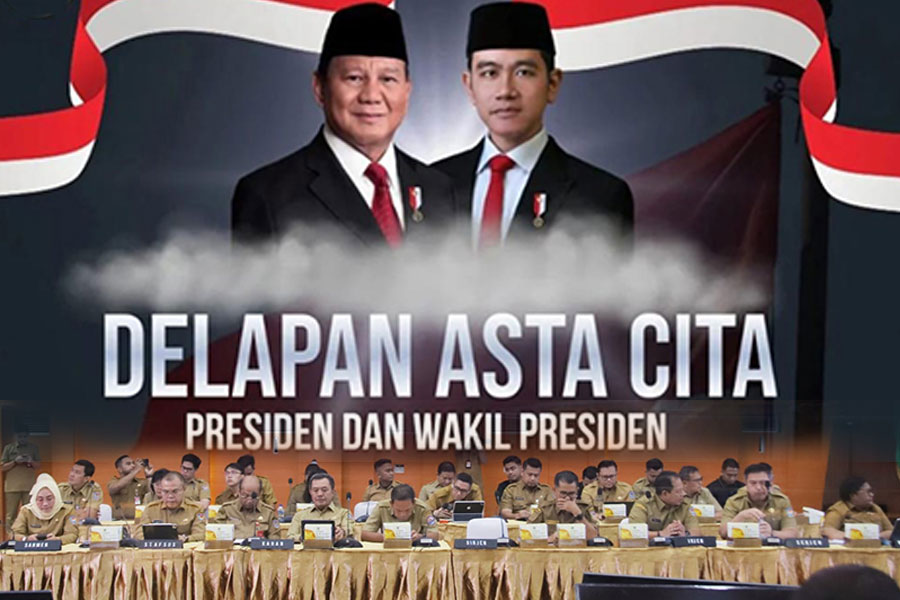Modernization Strategy: Governance of Internal Affairs Management, Ministry of Home Affairs & Regional Governments

The transformation of bureaucratic management within Indonesia’s central and regional governments is a grand agenda that has never lost its relevance in the nation’s developmental journey. Bureaucracy should not be seen merely as an administrative machine executing procedures, but as the very face of the state before its people. Hence, the quality of bureaucracy in today’s digital and Artificial Intelligence (AI) era reflects the quality of governance itself—making the idea of transforming it not a matter of choice, but a historical necessity.
Conceptually, two major foundations guide this effort. First is New Public Management, which emphasizes efficiency, productivity, and results orientation. Second is the Good Governance paradigm, which demands transparency, accountability, and public participation. When combined, these two paradigms do not merely produce a modern bureaucracy but also strengthen the state’s political legitimacy.
Thus, bureaucratic management transformation is not only a technocratic project but also a moral one—testing the nation’s ability to build governance that is clean and just. Such a noble vision must not stop at rhetoric. Ideals such as a corruption-free government, quality public services, and accountable bureaucracy must not remain on paper alone, but be measurable in achievement.
Efficiency, therefore, should not only mean cutting procedures, but must translate into cost savings, faster services, and higher public satisfaction. Likewise, accountability must go beyond internal reports, involving independent oversight and citizen participation. In other words, normative language must be translated into empirical instruments that can be justified and measured.
Indonesia has indeed sought to translate these ideas into concrete policies. Presidential Regulation No. 81 of 2010 on the Grand Design of Bureaucratic Reform 2010–2025 aims to create a clean and accountable, effective and efficient bureaucracy capable of delivering quality public services. Meanwhile, Presidential Regulation No. 95 of 2018 on the Electronic-Based Government System (SPBE) marks another milestone in the digitalization of bureaucracy.
However, major challenges remain—chief among them the need to change a work culture that is hierarchical, rigid, and resistant to change. Therefore, visionary leadership is required to drive transformation, along with effective communication to align understanding and incentives that encourage employee adaptation. Bureaucratic transformation, in essence, is also a transformation of the people within it.
Another key agenda is strengthening human resource capacity. A modern bureaucracy cannot exist without competent and adaptive civil servants (Aparatur Sipil Negara or ASN). Today’s bureaucrats must possess digital literacy, analytical skills, and adaptive leadership abilities. Data from the National Institute of Public Administration (LAN) in 2024 indicates that only about 36 percent of ASN have adequate digital literacy competencies. This figure illustrates the seriousness of the gap that hinders effective e-Government implementation. Therefore, ASN training must be based on real needs, not mere certification formalities.
At the same time, oversight systems must be strengthened. The principal-agent theory asserts that bureaucrats, as agents of the state, may abuse authority if oversight is weak. Data shows that 70 percent of corruption cases handled by Indonesia’s Corruption Eradication Commission (KPK) in 2022 were related to bureaucratic misuse of authority—from procurement to licensing. Hence, both internal and external oversight must be integrated, utilizing technologies such as big data analytics to detect irregularities early.
Bureaucratic digitalization brings great hope, but it must be designed inclusively. Learning from global practices, Estonia serves as a successful example. The small nation saves the equivalent of 2 percent of its GDP annually thanks to the digitalization of public services. The key lies not only in technology but in political consistency, system integration, and public trust in data security. Indonesia can learn that technology is merely a tool—the real determinant is institutional design and consistent political commitment.
All of this ultimately returns to fundamental issues: resistance to change, limited technical capacity, and fragmentation between central and regional governments. Bureaucratic reform often fails due to inconsistency across administrations and its reduction to political slogans. Yet bureaucracy is the lifeblood of the state. If it is not seriously transformed, national development will remain trapped by inefficiency, corruption, and low political legitimacy.
Therefore, bureaucratic transformation requires transformational leadership. Bureaucratic leaders must act not merely as regulators, but as driving forces who exemplify integrity. Reform must be carried out comprehensively—from central to regional levels—through interconnected information systems, continuous ASN development, and inclusive digitalization. Equally important, this agenda must gain cross-administration political support so that it does not die halfway.
Prof. Dr. Ermaya Suradinata, SH, MH, MS Chairman of the Board of Trustees, Center for Geopolitics & Geostrategy Studies Indonesia (CGSI)
